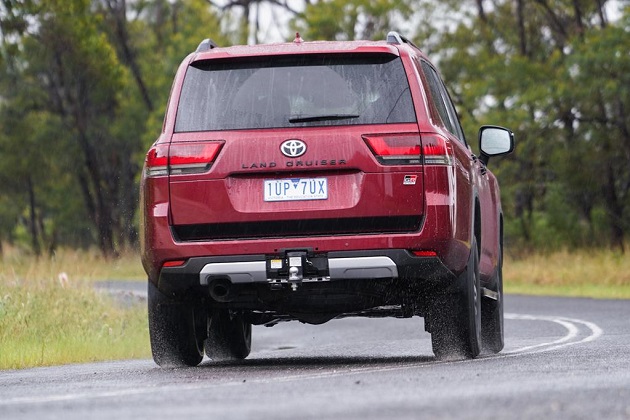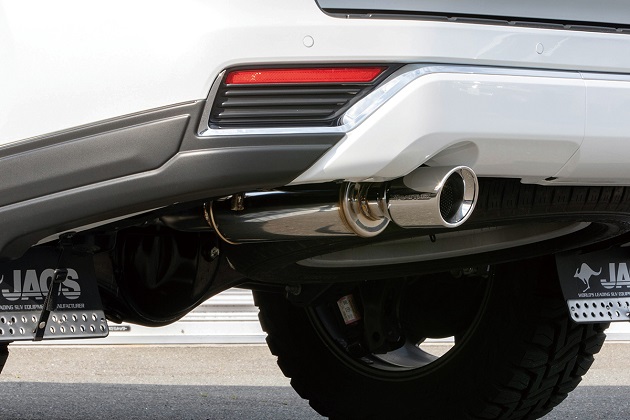Reasons to Get a Performance Exhaust for Your LandCruiser and How to Choose
You might have doubts about changing anything stock in a car with a 6-figure price tag. But even here corners have been cut. For the most capable off-roading 4WD you can buy in Australia, the Toyota LandCruiser 300 series, and the successor to the now legendary 200 series, the exhaust is where cost cuts are most evident. Despite the car now producing even more power, and the chassis and suspension reworked to offer a more enjoyable and competent off-roading experience, it’s the narrow tubing snaking underneath that’s the real letdown.
Why Consider an Aftermarket LandCruiser Exhaust?

The 300 series has a huge selection of interior and exterior OE accessories straight from the dealer, but exhausts aren’t one of them. That’s a shame because you don’t get to fully enjoy all the 300-plus horses in the new V6 diesel. Or the added torque over the outgoing model despite the reduction in cylinder count. Most of that gets lost in the narrow labyrinth that slithers under the car, causing restrictions in exhaust flow, increased engine stress with higher pressures and temperatures, and the inability of the diesel powerplant to take its next breath. This is also evident in older turbocharged engines, especially the 4.5-litre V8 diesel in the 200 and the 4.2-litre V6 in the 100 series.
Going with an aftermarket Landcruiser exhaust brings a heap of benefits, regardless of badge, series or fuel type:
- Increased power – wider and straighter piping means more efficient combustion and the ability to produce more horsepower. Conservative estimates average between 5 and 10 per cent over stock numbers, or for the 300 series, an additional 30hp.
- Wider power band – peak power is spread across a wider range, with increased torque and higher redlines too. This is more tangible from earlier on, and well into higher revs.
- Lower fuel use – the diesels can get thirsty (15L/100km combined isn’t uncommon), but with improved combustion and exhaust flow that aftermarket exhausts provide, you’ll be saving at the bowser, and doing your part in emissions reductions too.
- Longevity – aftermarket and performance systems are better made, include stronger materials and should last in more demanding driving. Coatings and metal treatment allow for higher temperatures, more strength on impact and rust resistance when driving through water or mud.
- Less weight – the improved materials are not only stronger, they’re lighter too. For a big car like the LandCruiser, you’ll be seeing weight savings of 20 kilos or more. And with less weight comes better performance and agility, especially when off-road.
- Better sound – muffler and resonator setups can fine-tune the exhaust note as you like. ‘Quiet’, ‘normal’ and ‘loud’ systems are available.
- Customisation – buyers can choose from several ‘complete’ configurations, or parts that improve exhaust flow, durability and style in different sections within the piping.
Choosing What’s Right for Your LandCruiser
There’s a dizzying selection of options when it comes to aftermarket systems made to fit the LandCruiser. To get the results you expect, consider the following:
Engine Compatibility
This one’s straightforward, but pair the right system with the right engine. This means choosing between exhausts for diesel and petrol engines, and whether they’re aspirated or turbocharged. Manifolds also must match the cylinder count.
Pipe Sizes
Pipes come in 2.5, 3 and 3.5-inch diameters, depending on the engine and power output in stock form and expected performance gains. 3-inch variants are a good balance between combustion efficiency, optimal exhaust velocity, and power gains. Going wider slightly reduces the effect of exhaust scavenging. However, you do get more top-end power and a linear power curve, at the expense of low-end torque.
Materials and Build

Much of the price differences are determined by the choice of metals and how the exhaust is built and assembled. Choose full stainless steel tubing if you’re after strength, corrosion resistance and durability. There are cost savings when going with aluminised steel (used primarily in the mufflers), but this won’t last long if you’re pushing the LandCrusier through water, gravel, or mud. Tips can be optioned in a range of materials and finishes, from chrome to carbon fibre, and often in larger diameters than the rest of the tubing for a subtle visual effect.
If cash isn’t an issue, then go with high-end brands that swap steel for titanium or Inconel. Titanium shaves off a lot of weight, is tougher than steel and holds up better to corrosion. For even more performance, an Inconel LandCruiser exhaust system handles much higher pressure and temperatures than steel and offers the best weight savings, but can also cost upwards of 5 figures.
Systems and parts are produced either by hand, with meticulous workmanship going into every detail, or using advanced production methods centring around casting, welding and CNC machining to deliver tight tolerances in each component. The majority of systems are of the modular type, meaning parts can be mixed and matched to meet specific performance and efficiency goals.
The Sound You’re After
Quiet LandCruiser exhausts have mufflers and resonators that drone out more of the sound waves using specially designed perforated baffles and more insulative materials. Buyers can also opt for a louder and full-bodied sound by going with straight pipes, high-flow cats, and wider tubing throughout. Valving is also an option.
Brands and Prices
Dozens of brands make complete exhaust systems and parts for new and older LandCruiser models. Avoid cheaper imports, despite the lower prices. They often miss out on warranties and have frequently proven to be unreliable. Local brands with a wide selection of Toyota off-roading accessories promise better performance and more durability for a few dollars more. But the best option for both performance and value is local exhaust specialists. And here too there are quite a few respected names to choose from.